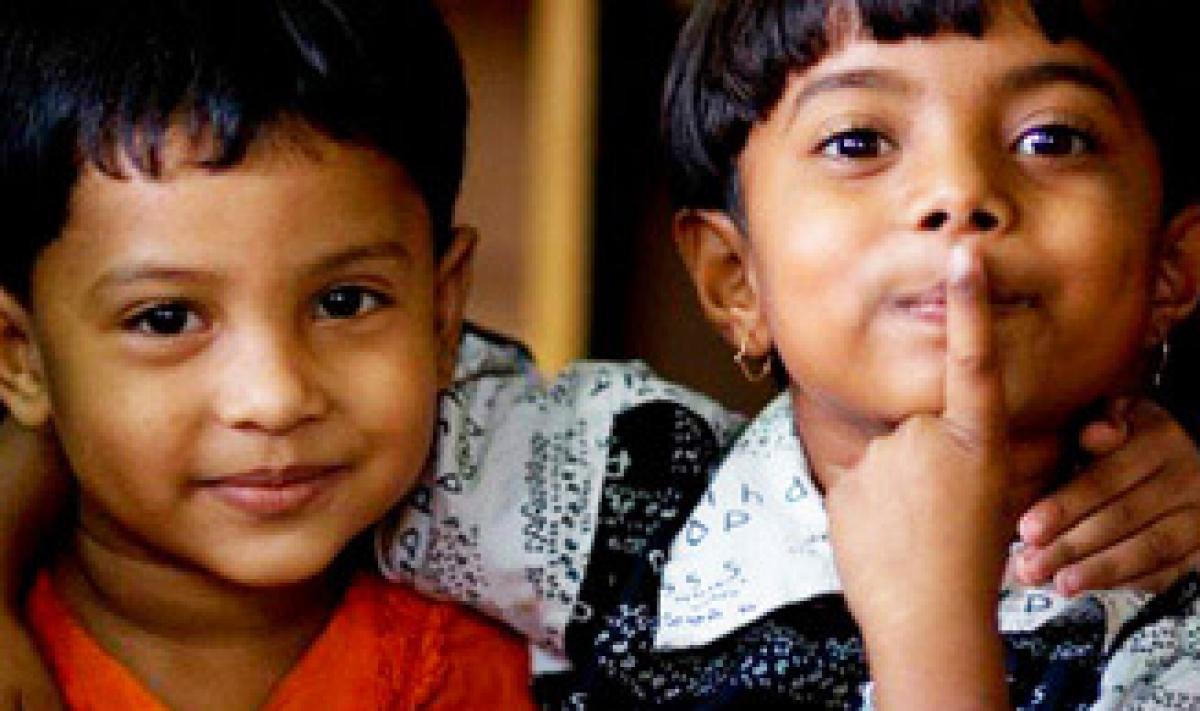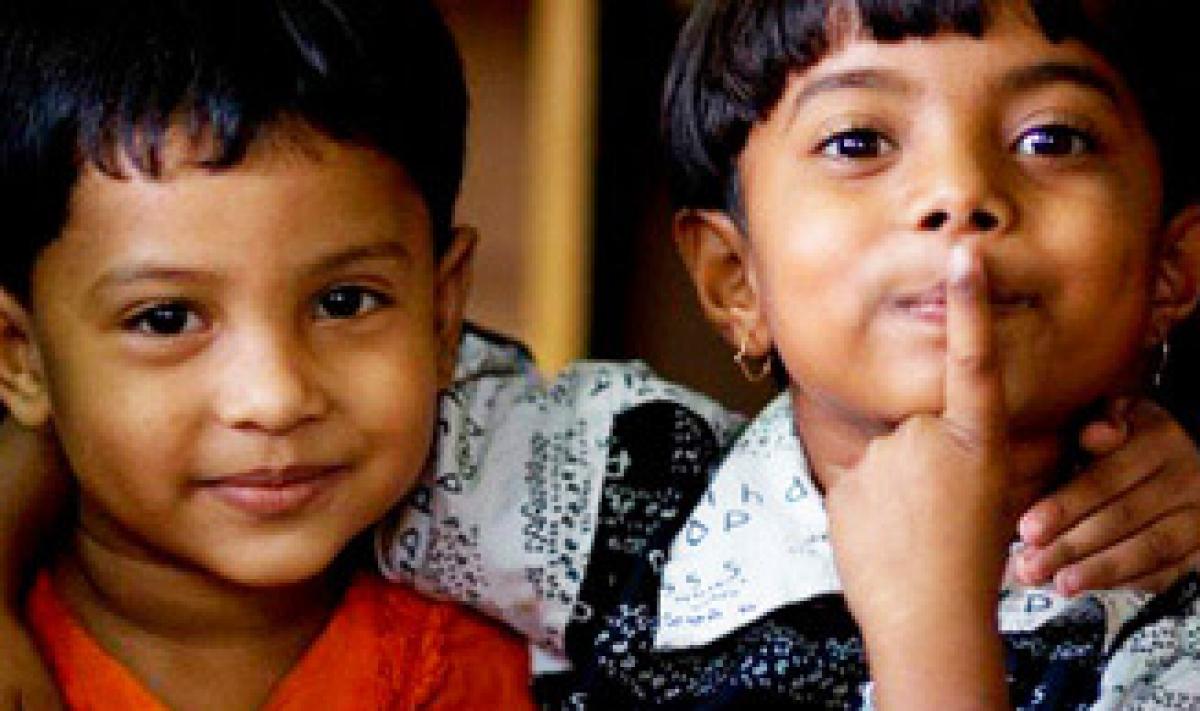States need to Reduce Child Mortality to achieve MDGs

India has realized impressive gains in child survival over the last two decades. However, at the current pace, the country is unlikely to achieve the Millennium Development Goal (MDG) 4 -which aims to reduce Under-Five Mortality (U5MR) by two thirds between 1990 and 2015- unless the related socio-economic; maternal and demographic; and environmental determinants are urgently addressed, according to the India Country Report on MDGs in 2015.
 India has realized impressive gains in child survival over the last two decades. However, at the current pace, the country is unlikely to achieve the Millennium Development Goal (MDG) 4 -which aims to reduce Under-Five Mortality (U5MR) by two thirds between 1990 and 2015- unless the related socio-economic; maternal and demographic; and environmental determinants are urgently addressed, according to the India Country Report on MDGs in 2015.
India has realized impressive gains in child survival over the last two decades. However, at the current pace, the country is unlikely to achieve the Millennium Development Goal (MDG) 4 -which aims to reduce Under-Five Mortality (U5MR) by two thirds between 1990 and 2015- unless the related socio-economic; maternal and demographic; and environmental determinants are urgently addressed, according to the India Country Report on MDGs in 2015.
The target is under MDG4 is to Reduce by two-thirds, between 1990 and 2015, the under-five Mortality Rate, which includes Under- Five Mortality Rate, Infant Mortality Rate, Proportion of one year old children immunised against measles.
Key Findings
· There has been a consistent decline in Infant Mortality Rate (IMR) and Under-Five Mortality Rate (U5MR) in India and in its states. The rate of decline in current decade is higher than in the previous.
· However, based on robust projections, at the current rate of decline, India is unlikely to meet the targets for Millennium Development Goal (MDG)-4, which aims to reduce by two thirds, between 1990 and 2015, the under-five mortality rate.
· Six states, though, namely Kerala, Tamil Nadu, Maharastra, Punjab, Himachal Pradesh and West Bengal are likely to achieve the goal.
· The other major states like Telangana, Andhra Pradesh and Gujarat likely to miss the goal.
Infant mortality Rate (IMR)
The Infant Mortality Rate (IMR) is the number of death in children under 1 year of age per 1000 live births.
In terms of Infant Mortality Rate (IMR), this translates into IMR of 29/1000 live births to be achieved by 2015. As per the latest, Sample Registration System (SRS) Report published by the Registrar General of India(RGI) in 2013, the IMR in India was estimated at 80 per 1,000 live births in 1990.
As per SRS 2013, the IMR is at 40 and as per the historical trend; it is likely to reach 39 by 2015, against the target of 27 infant deaths per 1000 live births by 2015. However, with the sharp decline in the recent years, the gap between the likely achievement and the target is expected to be narrowed.
As per SRS 2013, 15 States/UTs have already achieved MDG 4 (IMR ≤ 29) namely Kerala, Tamil Nadu, Goa, Andaman & Nicobar Islands, Chandigarh, Daman & Diu, Delhi, Lakshadweep, Puducherry, Manipur, Maharashtra, Nagaland, Tripura, Sikkim, Punjab.
The other major states, and India as a whole, are likely to miss the MDG 4. The two worst performers, Assam and West Bengal, are likely to achieve their respective targets by 2032 and 2022 respectively.
In Telangana the IMR for the state is 51/1000 in 1991 and it was (49) in 2010 and it is likely to be about (46) in 2015 and it has to be brought down to 17 by 2015, it appears the State cannot accomplish the target of MDG4 by 2015 in reducing Infant Mortality Rate.
On the other hand, Andhra Pradesh IMR in 73 in 1994 and it has to be brought down by 28 in 2015 and 39 in 2011.
Almost all the states have witnessed a significant progress since the advent of National Rural Health Mission (NRHM) in mid-2005-the AARR has almost doubled in the post-NRHM epoch for most states and India as a whole.
The overall progress of most Indian states towards achieving MDG 4 is presently unsatisfactory. However, given the momentum gained since the commencement of NRHM, acceleration in child survival is quite possible in these states.
Under- Five Mortality Rate (U5MR)
Under the Millennium Development Goals (MDGs), the MDG 5 target is to reduce maternal mortality ratio (MMR) by three quarters between 1990 and 2015. This translates to reducing the MMR from 560 in 1990 to 140 in 2015. India is likely to reach an MMR of 140 if the current compound rate of annual decline continues.
Significant inter State and intra State variations were observed in U5MR. In 2013, the lowest U5MR was registered in Kerala (12) followed by Tamil Nadu (23), Delhi (26) and Maharashtra (26). The highest U5MR was recorded in Assam (73), followed by Madhya Pradesh (69), Odisha (66) and Uttar Pradesh (64)and in addition to these States, Rajasthan (57), Bihar (54), and Chhattisgarh (53) had U5MR higher than the national level estimate (49).
Coming to Telangana (46), it is far from satisfactory in containing it child mortality rate both in absolute terms compared to southern states. The U5MR was 67 in 2001, and decreased to 46 by 2012 due to indifferent attitude of combined state of Andhra Pradesh and it is likely to be 41 in 2015 and MDG target for Telangana is (31), whereas in Andhra Pradesh, the U5MR is (110) in 211 and (92) in 2011 and MDG target is 28 by 2015, it appears both states are trailing beyond to achieve their ambitious targets.
While examining the performance of States in reducing the U5MR, it is evident that, all States have achieved considerable progress. The bright line is that, even the States with high U5MR have made impressive improvement in reducing U5MR by nearly 18-20 points during 2009 - 2013.
Total Fertility Rate (TFR)
No targets have been set under MDG for Total Fertility Rate (TFR). The progress however for TFR as per SRS in 2011 and 2012 was 2.4 and has declined to 2.3 in 2013. 24 States and UTs having already achieved the replacement level of fertility of 2.1.
Reducing child mortality is very critical for the development of a nation. India needs to continue the focussed initiatives aimed to address and tackle the issues associated with child health in a holistic manner to reach the desired level of development..
G.Rajendera Kumar
Next Story

